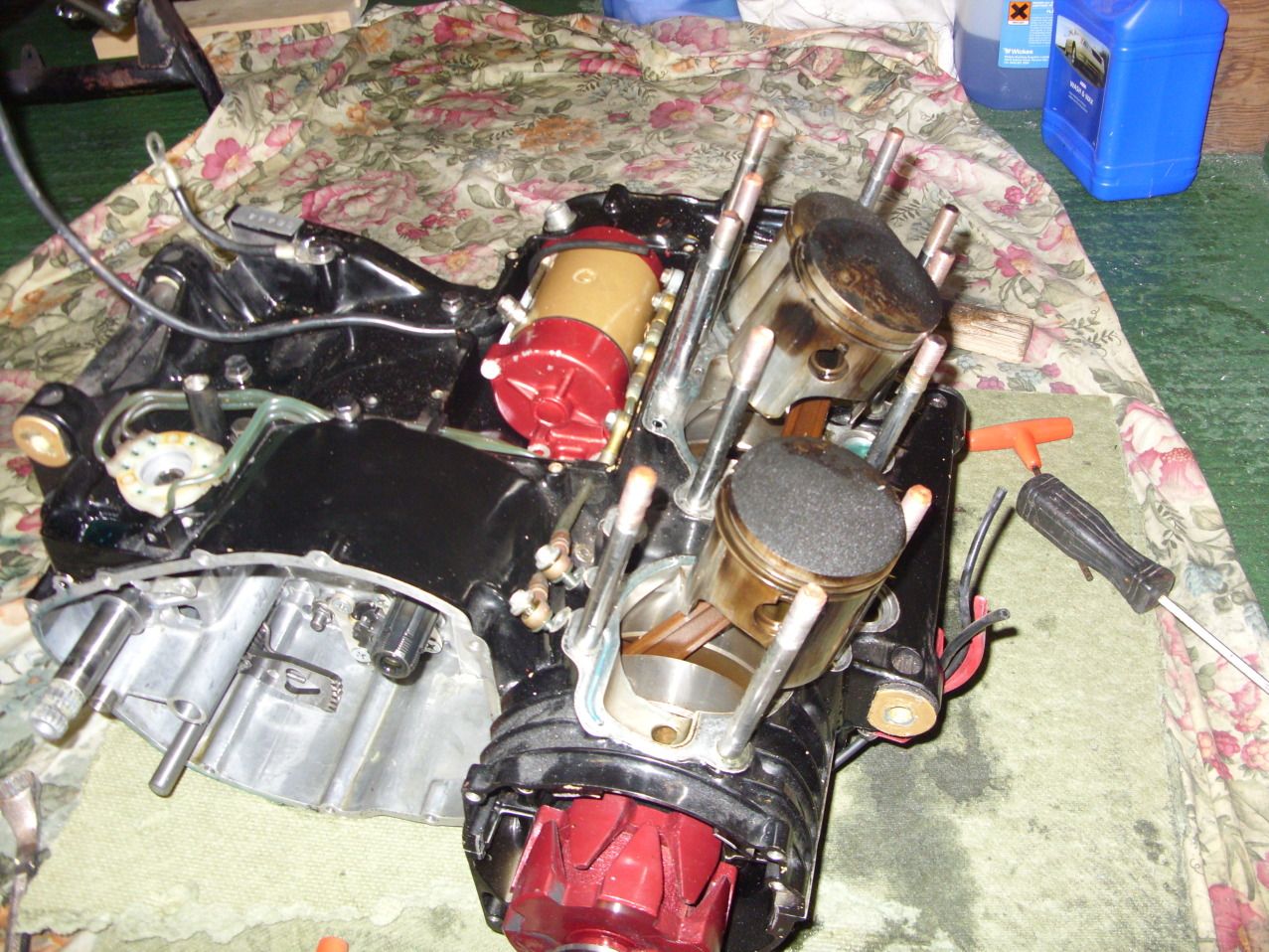
Suzuki GT750 engine restoration
The GT750 was heavy at 550 lbs, with a 739cc two stroke three cylinder engine with 70 x 64mm bore and stroke. It had a five-speed gearbox and three into four exhaust. The first model year (1972), the GT750J, had a double sided, twin-leading shoe, 200mm drum front brake with 180mm drum rear. The Exhaust Coupler Tube System (ECTS) that connected.
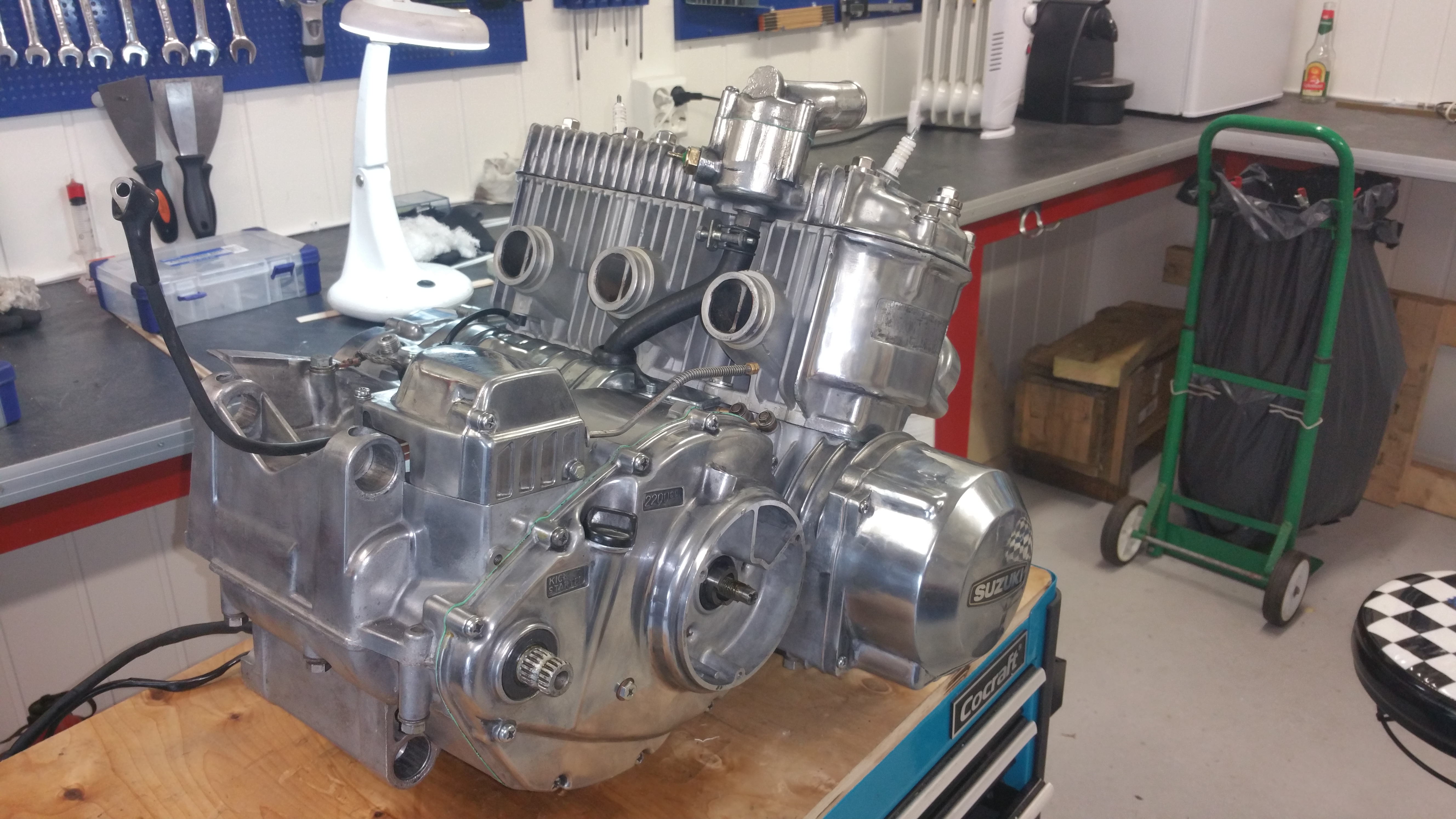
Suzuki GT750 Engine overhaul Man cave & MC Restoration
The real difference between this Suzuki and the other motorcycles of the day was it's liquid cooling. The Suzuki GT750 was the first mass production Japanese motorcycle with a liquid-cooled engine, and Suzuki was the first motorcycle company to apply liquid cooling to a serial production bike since the Scott two-strokes of the 1920s and '30s.

Suzuki GT750 Suzuki, Motorcycle engine, Motorcycle
$14.05 shipping or Best Offer SPONSORED Transmission Gear Box 1974 Suzuki GT750 GT 750 Water Buffalo Kettle Pre-Owned: Suzuki $199.99 $17.10 shipping SPONSORED Stay Bar fits 1973 Suzuki GT750 (Fits: Suzuki GT750) Pre-Owned: Suzuki $113.70

Suzuki GT750 Engine Rebuild Complete Video (1975) Part 1 YouTube
The Suzuki GT750 offered a noticeably different take on the Honda CB750's formula. And the liquid-cooled two-stroke engine is just the start.. like the contemporary H2, the GT750 has a three-cylinder engine. However, the GT750's 738cc two-stroke three-cylinder engine has one notable difference: liquid cooling. That made the Suzuki GT750.

suzuki gt750 superior engine finishing and rebuild YouTube
Launched as Suzuki's flagship superbike on the show circuit in 1971, the GT750 wasn't a fire-breathing monster like the Kawasaki Mach IV/H2 triple, but instead proved to be a pleasant touring bike, comfortable to ride, with a roomy seat and a handy grab rail.

Suzuki GT 750 engine stkone Flickr
The Suzuki GT750 is a water-cooled three-cylinder two-stroke motorcycle made by Suzuki from 1971 to 1977. It is the first Japanese motorcycle with a liquid-cooled engine. [3] The Society of Automotive Engineers of Japan (in Japanese) includes the 1971 Suzuki GT750 as one of their 240 Landmarks of Japanese Automotive Technology. [4] Introduction
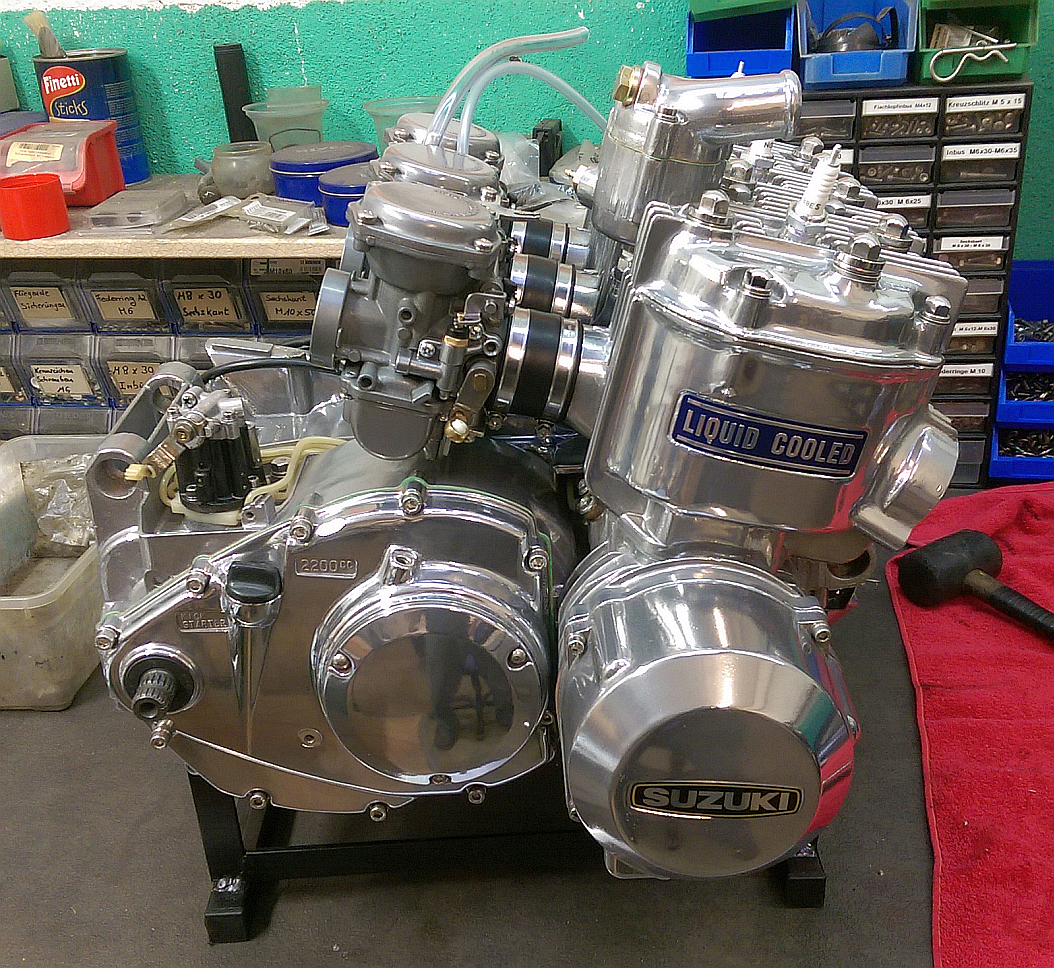
Der Motor Suzuki GT 750 B Bj. 1978 Suzuki Restaurierungen Belmondos Bikeschmiede
The first Hopeless Class entry was another Suzuki, an RE5 Rotary, in the first Iron Butt Rally, in 1984. Running an oddball motorcycle powered by an engine practically nobody had ever heard of.

1976 Suzuki GT750 Voitures rétro, Voiture, Rétro
Welcome to the Suzuki GT750 Kettle Club Website. it also marked the 50th year of the launch of Suzuki's 2-stroke flagship at the Tokyo Motor show in October 1970. Suzuki boldly revealed Japan's first serial manufactured, water-cooled 750 to a motorcycling world still reeling from the launch of Honda's ground-breaking CB750/4..
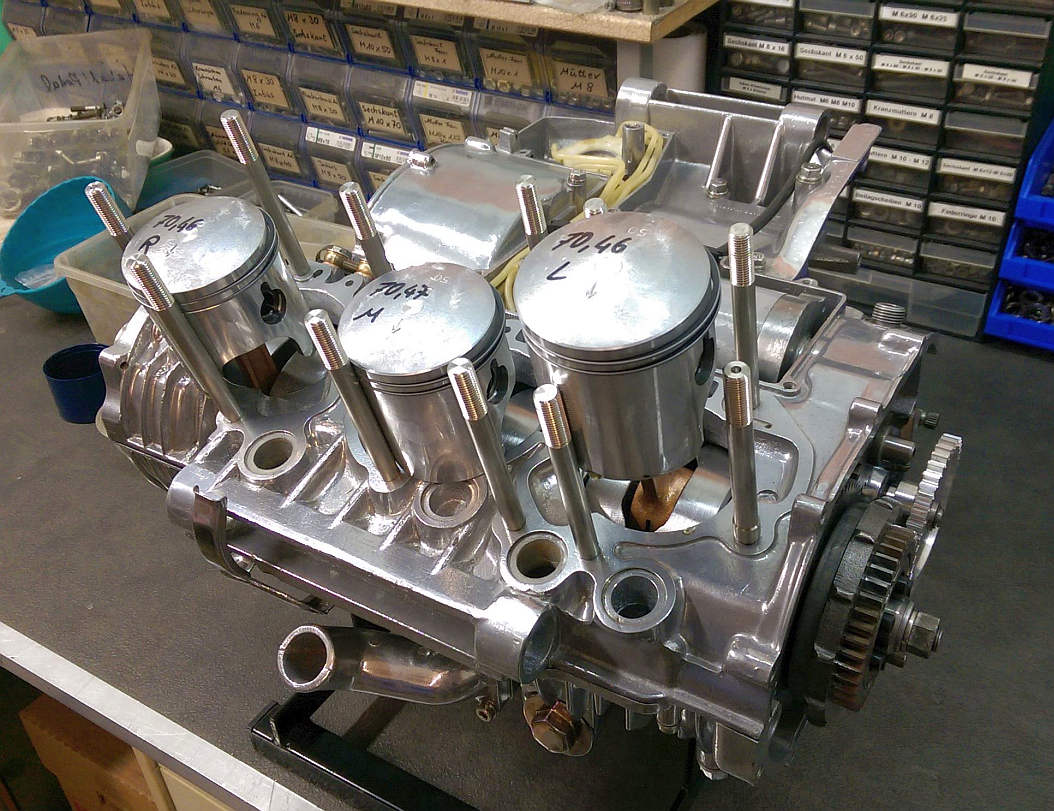
Der Motor Suzuki GT 750 B Bj. 1978 Suzuki Restaurierungen Belmondos Bikeschmiede
The Suzuki GT750 was unveiled to fanfares at the 1971 Tokyo show. The new model was Suzuki's answer to the Honda CB750, and the Kawasaki H2, but was very different to both.. Clearly, Suzuki wanted this flagship machine to represent the Suzuki Motor Company in the best light possible. The engine firing impulses corresponds to that of a 6-cyl.

Suzuki GT750 Classic Motorbikes
The Suzuki GT750, also known as the Water Buffalo or Kettle, has a unique place in the history of 1970s Japanese motorcycles, with its water-cooled two-strok.
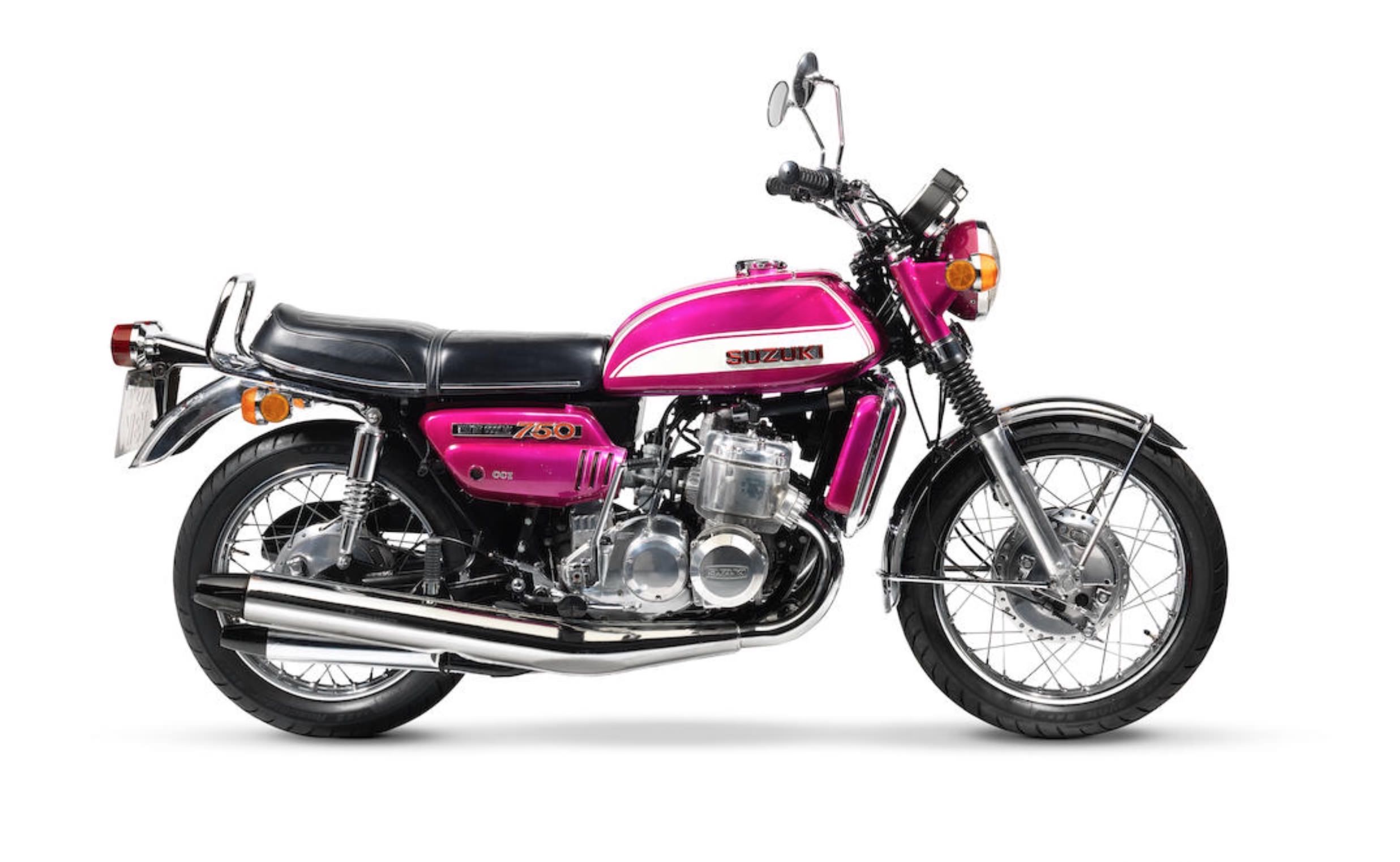
The Original 750cc TwoStroke The Suzuki GT750 "Le Mans"
Specifications: Engine: Liquid-Cooled Two-Stroke Type: Port Induction Triple Bore & Stroke: 70mm x 64mm Displacement: 738cc's Compression Ratio: 6.7 : 1 Ignition: Points, Coil, 12V Battery Lubrication: Oil Injection Carburetor: Three Mikunis, VM32 Starting: Kick & Electric Horsepower: 67HP, rated Primary: Gear Driven Clutch: Wet, Multi-Plate

GT750 3 cylinder two stroke engine close up
The strength of the Suzuki GT750 is its smooth, powerful engine. While Honda and Kawasaki released full-throttle superbikes focused on performance, Suzuki prioritized smooth acceleration and riding refinement. The main claim to fame for the GT750's engine is Suzuki's decision to abandon air-cooled engines in favor of a liquid cooling system.
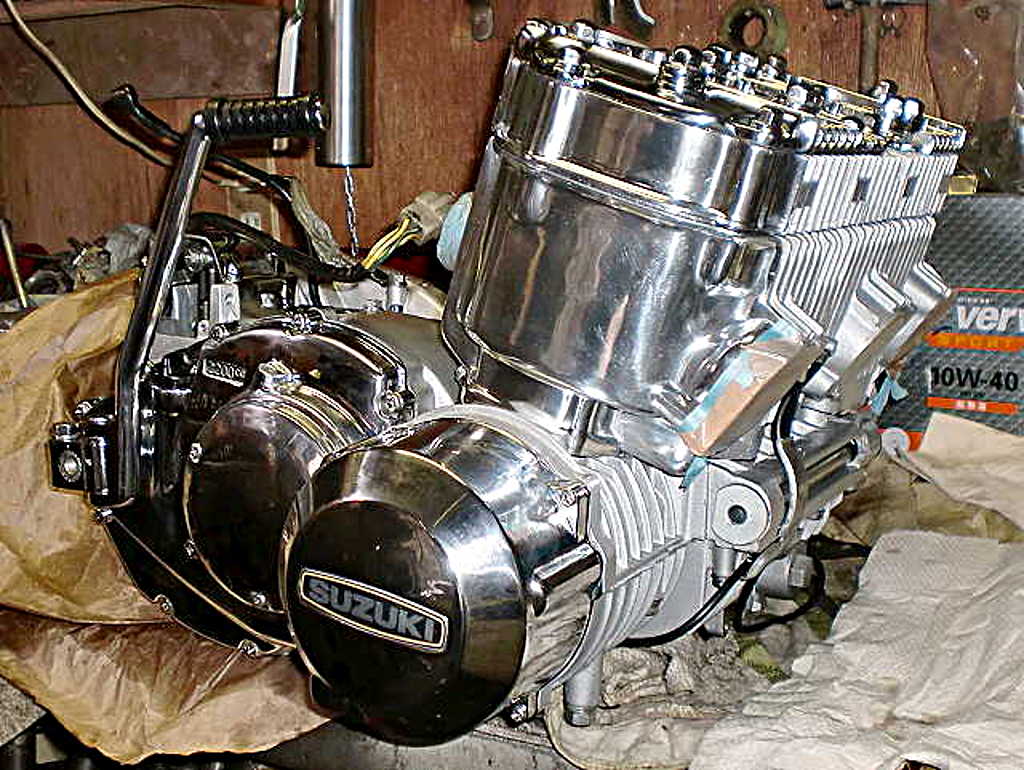
A Field Guide to the Suzuki GT750
The final configuration was a 738cc, two-stroke triple that made around 67 horsepower at 6,500 rpm. Was it a superbike, though? Not exactly. The Suzuki GT750 was introduced in 1971—and like.

1974 Suzuki GT750 Very Original Full engine Rebuild SOLD Car And Classic
Suzuki developed the GT750, known as the Le Mans in the USA and Canada, by adding a cylinder to the parallel twin two-stroke Suzuki T500, and water-cooling the resulting inline-3 cylinder engine. The distinctive lack of heat fins on the engine gave rise to a number of unusual nicknames for the GT750 in different parts of the world.
No Reserve 1974 Suzuki GT750 Iconic Motorbike Auctions
The GT750 engine features horizontally split crankcase halves which support the massive, four-main-bearing crankshaft. The crank has throws spaced 120 deg. apart, giving the same number of firing impulses as an in-line six-cylinder four-stroke.. In a further effort to make the GT750 as quiet as possible, Suzuki incorporated an air filter.

Racing Cafè Suzuki GT 750 Special 2
Suzuki ran two parallel assembly lines for the GT750. Although frame and engine numbers began at 10001, they soon got out of sequence due to quality control, where crankcases were scrapped and the next number substituted. Close-up of Wayne Waddington's 1975 M model. Steve Thompson's stable so far. From left J (1972), K (1973) and A (1976.